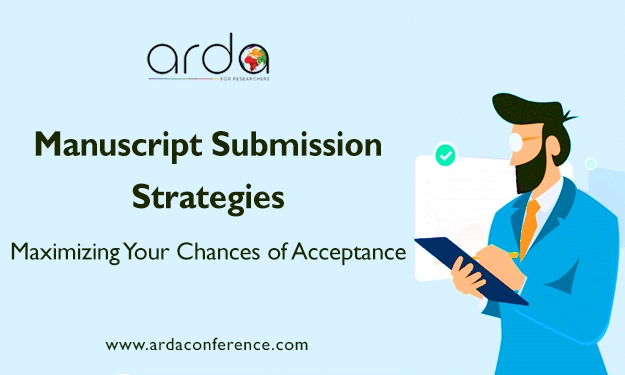Manuscript Submission Strategies: Maximizing Your Chances of Acceptance

Is your manuscript submission getting rejected every time? if yes, then we have the amazing tips for you to maximize the submission of manuscript.
You write a manuscript with great expectations for its acceptance. We all do our best to make sure our paper is accepted in the desired journal, and you get recognition for your work.
With this in mind, we have listed below some tried-and-tested manuscript submission strategies. Following these strategies can maximize your chances of acceptance. So, keep reading on to know tips for writing a manuscript:
Select the Right Journal
You have written a manuscript on a topic related to robotics, and you are submitting this to a health-related journal. Clearly, your manuscript will be rejected.
So, make sure you choose the right journal for manuscript submissions. The journal should align with your paper’s subject matter and audience. Review the types of articles the selected journal publishes. This will give you a good idea of editorial preferences and readers’ expectations.
When it is time to submit research paper for publication, choosing the right journal increases the chances of your manuscript’s acceptance. This also ensures that your work reaches a broader and the most relevant audience.
Follow Journal Guidelines for Manuscript Submission
Every journal outlines specific detailed instructions for manuscript formatting, reference style, figure specifications, and more. You have to make sure you follow all these guidelines strictly when curating and submitting your journal. So, this is one of the most crucial manuscript submission strategies.
Writing your manuscript in accordance with the journal’s guidelines makes the review process easy and smooth. So, being a manuscript author, you must carefully review and follow these guidelines.
Start Writing at Your Earliest
It is a good practice to start writing your manuscript as early as possible. This is even if you do not have a complete set of experiments.
You can start with the background/introduction of your paper, which is largely based on your past research. In addition, you can create the methods and materials section. In this way, you will get a head start when it is time to finish your paper early.
Also, starting with your manuscript as early as possible will give you enough time for editing and revisions.
Clear and Precise Writing
A poorly written manuscript becomes a headache to everyone, from yourself to editors, reviewers, and research paper publishers. This can easily lead to the rejection of your manuscript. So, you have to make sure you write a clear and precise manuscript, making it easy for editors, reviewers, and readers of the journal.
Here are some proven tips for writing clear and precise manuscripts:
- Use clear, plain, and elegant language. Avoid overly technical language.
- Eliminate abbreviations and jargon.
- Pay attention to paragraph construction and logical flow.
- Your manuscript should have a clear, central message focused on the main topic.
Pay Attention to the Cover Letter
The cover letter is an excellent opportunity to highlight the uniqueness and significance of your manuscript. The cover letter should explain why your work is valuable for the journal you are submitting it to.
Key information you must include in the cover letter for your manuscript are:
- Editor’s name
- Journal’s name
- Title of the manuscript
- Article type
- Submission date
- Brief background of your study
- A brief overview of the methodology used
- Key findings and their significance
- Contact information of the corresponding author
And more, as per the journal’s guidelines.
Network and Seek Feedback
Getting feedback on your work before the final submission of manuscript is crucial. So, engage with your colleagues, peers, and mentors in your field. Ask them to review your paper and give constructive feedback and criticism on your work. As a result, you will be able to spot any weaknesses, complexities, and ambiguities in your manuscript.
In addition, networking and collaboration on your work can also enhance your work’s quality and reach. You can learn about the latest trends and technologies in your field. Incorporate this knowledge and feedback to improve your manuscript, which further increases the chances of your paper’s acceptance.
Improve Language and Presentation
Your paper or manuscript should be free from grammatical errors and ambiguities. This is very important, particularly for non-native English writers.
In such cases, we encourage you to use professional editing services to ensure your paper is up to the mark. These professional services excel at academic writing with a wealth of experience in this area. So they can increase your manuscript’s presentation and readability.
These professional editors ensure that the language is not a barrier to write and publish research paper manuscripts while still allowing the scientific essence in your work.
So, follow these manuscript submission strategies to maximize your chances of acceptance. All the best!!
